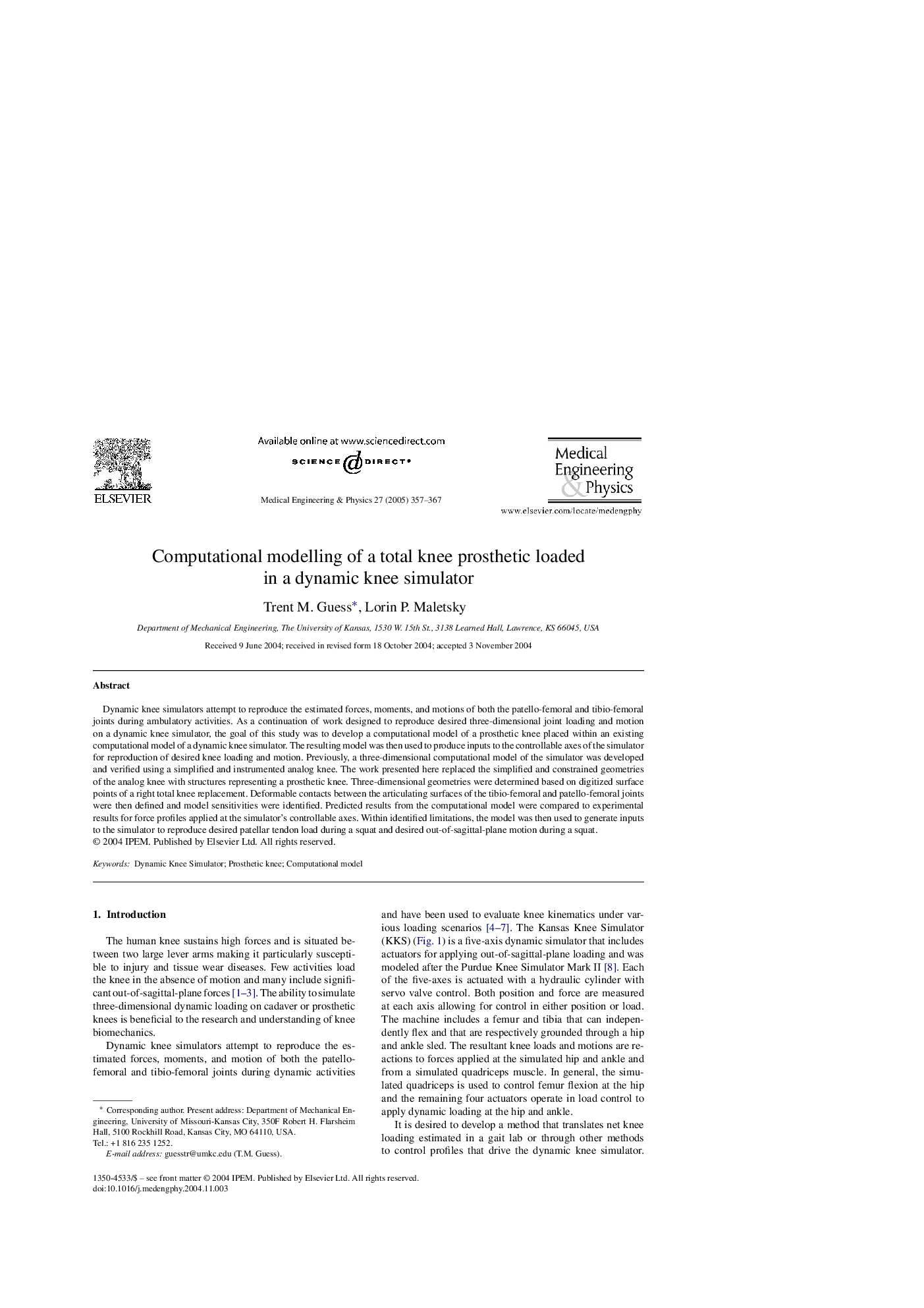| Article ID | Journal | Published Year | Pages | File Type |
|---|---|---|---|---|
| 10435198 | Medical Engineering & Physics | 2005 | 11 Pages |
Abstract
Dynamic knee simulators attempt to reproduce the estimated forces, moments, and motions of both the patello-femoral and tibio-femoral joints during ambulatory activities. As a continuation of work designed to reproduce desired three-dimensional joint loading and motion on a dynamic knee simulator, the goal of this study was to develop a computational model of a prosthetic knee placed within an existing computational model of a dynamic knee simulator. The resulting model was then used to produce inputs to the controllable axes of the simulator for reproduction of desired knee loading and motion. Previously, a three-dimensional computational model of the simulator was developed and verified using a simplified and instrumented analog knee. The work presented here replaced the simplified and constrained geometries of the analog knee with structures representing a prosthetic knee. Three-dimensional geometries were determined based on digitized surface points of a right total knee replacement. Deformable contacts between the articulating surfaces of the tibio-femoral and patello-femoral joints were then defined and model sensitivities were identified. Predicted results from the computational model were compared to experimental results for force profiles applied at the simulator's controllable axes. Within identified limitations, the model was then used to generate inputs to the simulator to reproduce desired patellar tendon load during a squat and desired out-of-sagittal-plane motion during a squat.
Keywords
Related Topics
Physical Sciences and Engineering
Engineering
Biomedical Engineering
Authors
Trent M. Guess, Lorin P. Maletsky,
